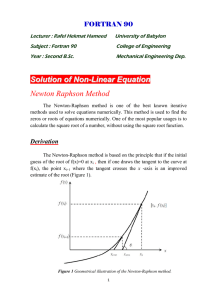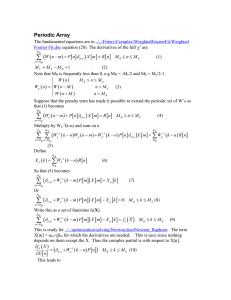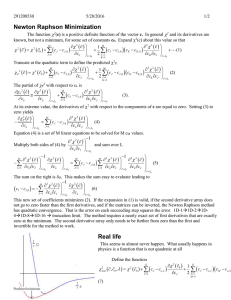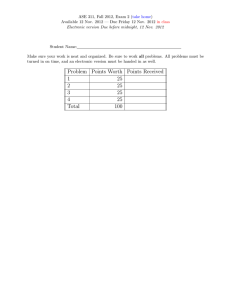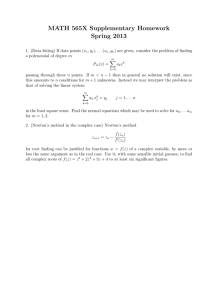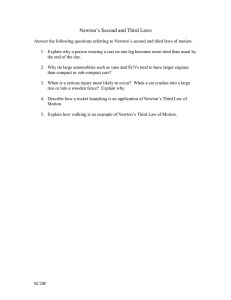Text Book Notes Major Historical Anecdotes
advertisement
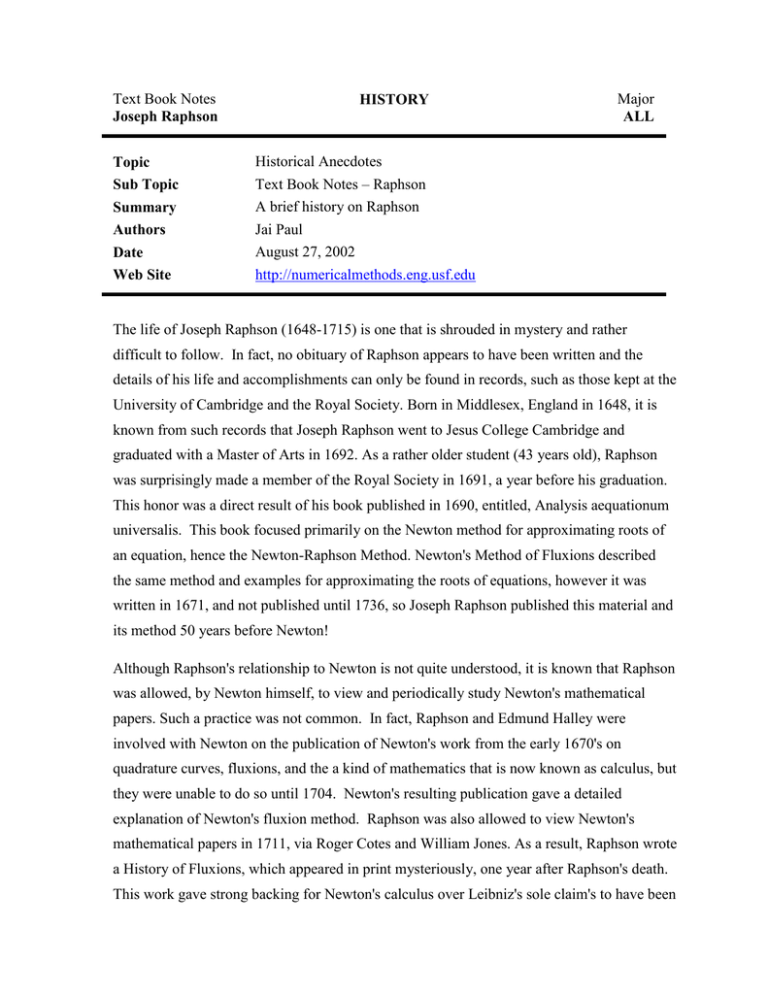
Text Book Notes Joseph Raphson Topic Sub Topic Summary Authors Date Web Site HISTORY Major ALL Historical Anecdotes Text Book Notes – Raphson A brief history on Raphson Jai Paul August 27, 2002 http://numericalmethods.eng.usf.edu The life of Joseph Raphson (1648-1715) is one that is shrouded in mystery and rather difficult to follow. In fact, no obituary of Raphson appears to have been written and the details of his life and accomplishments can only be found in records, such as those kept at the University of Cambridge and the Royal Society. Born in Middlesex, England in 1648, it is known from such records that Joseph Raphson went to Jesus College Cambridge and graduated with a Master of Arts in 1692. As a rather older student (43 years old), Raphson was surprisingly made a member of the Royal Society in 1691, a year before his graduation. This honor was a direct result of his book published in 1690, entitled, Analysis aequationum universalis. This book focused primarily on the Newton method for approximating roots of an equation, hence the Newton-Raphson Method. Newton's Method of Fluxions described the same method and examples for approximating the roots of equations, however it was written in 1671, and not published until 1736, so Joseph Raphson published this material and its method 50 years before Newton! Although Raphson's relationship to Newton is not quite understood, it is known that Raphson was allowed, by Newton himself, to view and periodically study Newton's mathematical papers. Such a practice was not common. In fact, Raphson and Edmund Halley were involved with Newton on the publication of Newton's work from the early 1670's on quadrature curves, fluxions, and the a kind of mathematics that is now known as calculus, but they were unable to do so until 1704. Newton's resulting publication gave a detailed explanation of Newton's fluxion method. Raphson was also allowed to view Newton's mathematical papers in 1711, via Roger Cotes and William Jones. As a result, Raphson wrote a History of Fluxions, which appeared in print mysteriously, one year after Raphson's death. This work gave strong backing for Newton's calculus over Leibniz's sole claim's to have been the inventor of calculus. Newton's view's on the contents of Raphson's book were almost certainly favorable, since Newton published letters which had passed between himself and Leibnitz over the debate of exactly who was the inventor of calculus in the appendix of the reprint of a History of Fluxions. Along with the Raphson's History of Fluxions, Raphson published several other works both for Newton and for his career. He translated all of Newton's Algebraic work from Latin to English, as well as Newton's Arithmetica universalis. At the beginning of his career, in addition to Analysis aequationum universalis, Raphson published a short version of Ozanam's mathematical dictionary, entitled A mathematical dictionary. Finally, Raphson's greatest historical contributions were the theological works De spatio reali and Demonstratio de deo. In these works, Raphson freely expressed his philosophy, which based its structure and ideals upon the Jewish mysticism of Cabalism. This religious ideal's philosophies, which were strongly influential from the 12 century on, were passed down through the ages by an oral tradition. This religion focused on the withdrawal of the divine light, thus creating primordial space and its doctrines followed "cosmic restoration" to Jews who live mystically. De spatio reali was a work which dealt with Raphson's vision of space, called 'real space'. He thought of space as being independent of the mind that perceives it. In this work, he also discussed the infinite (potential and actual) and motion in space, where space is said to be infinite, but the objects in it are finite. Demonstratio de deo dealt with the issue of space and Raphson's Cabalist ideals. As an ironic twist, Newton views of space were strongly influenced by religion, the Christian religion, and philosophy.
